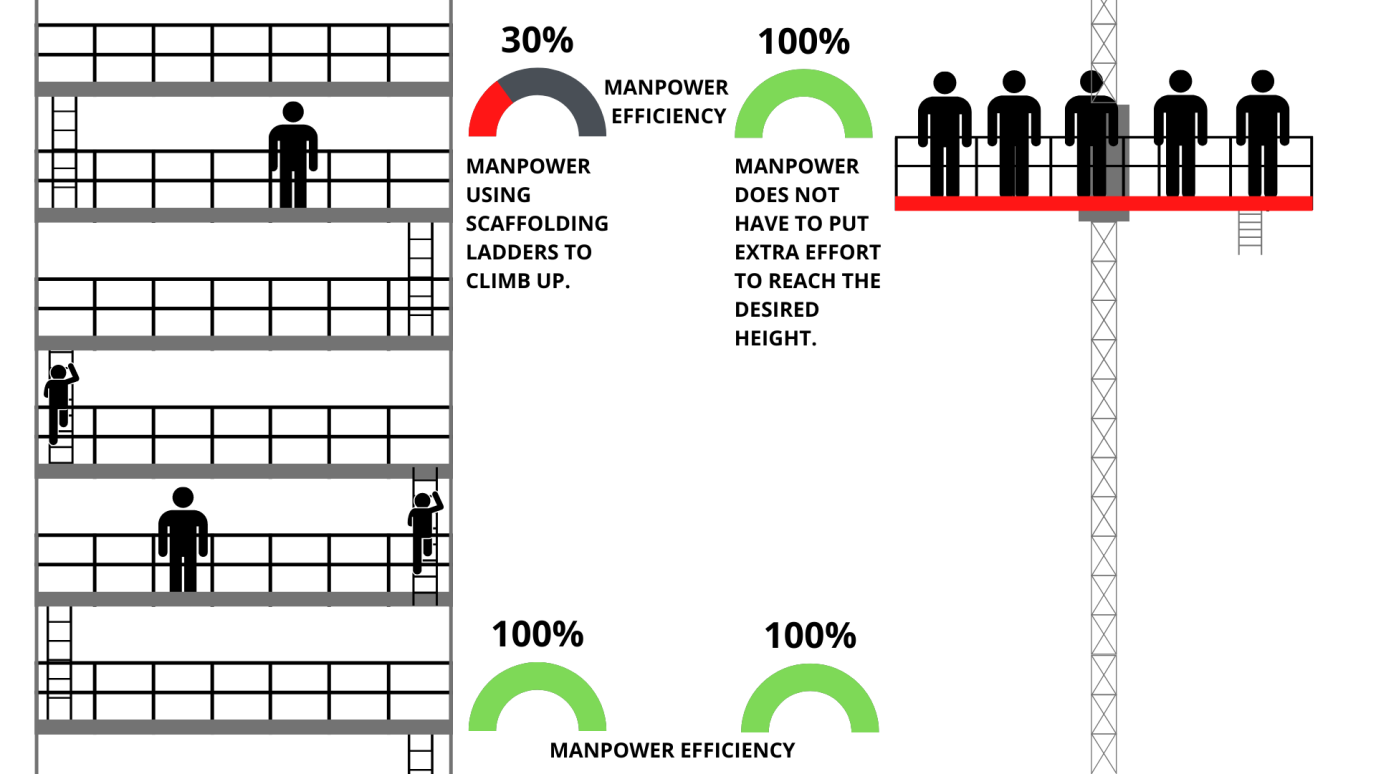Mast climbers are automatic lifting work platforms. Manpower does not have to climb the scaffolding ladders to reach the desired height.
Take an example of a 100-meter flare stack. To reach its maximum height workers are required to use scaffolding ladders. It will take approx. 30-45min to reach its maximum height. They will feel tired and need rest every 10-12 meters.
These constant in-between rests affect the overall project time duration. Also after reaching the maximum height workers are not in an active state to carry out the job immediately.
Mast Climbing Work Platform (MCWP) takes your manpower from 0 to 100 meters in one go. Their efficiency won’t be affected once they reach the maximum height. They can immediately carry out the construction or maintenance activity once they reach the desired work location.
The following picture shows how manpower efficiency gets reduced once they go up using the scaffolding ladders. Almost 70% of the overall manpower efficiency reduces. While in the case of APEL MCWP manpower efficiency does not get affected at any height.
Apart from the time consumption, workers also face several health issues while working on scaffoldings. Such as Musculoskeletal Disorders (MSDs) e.g. sprains and strains.
APEL team carry out a detailed study of how the use of mast climbers can reduce overall manpower effort and increases their safety while working at height and how MCWP saves thousands of man-hour each year that can be utilized in productive activities.
